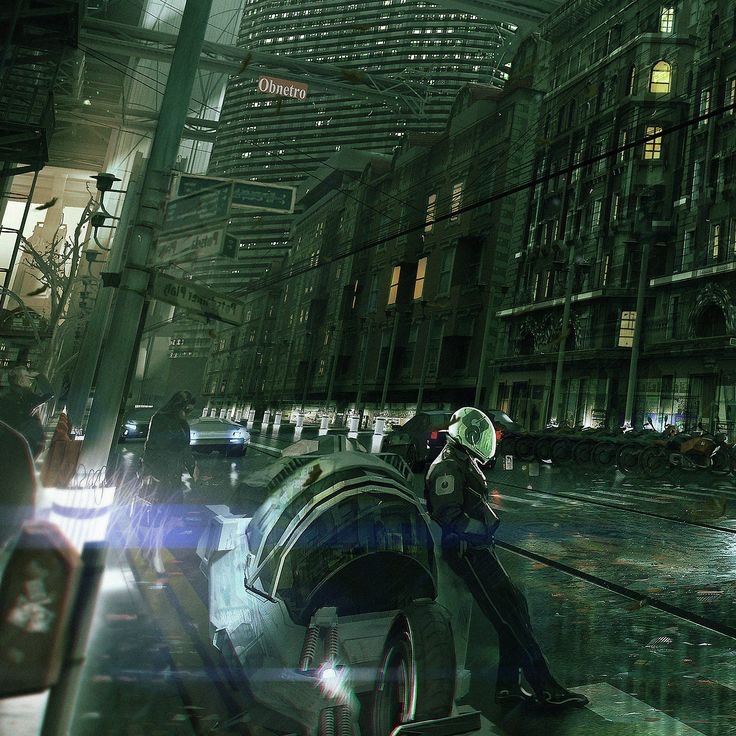Hacker
The Hacker can occasionally seem like a one-trick Pony, doing dedicated Matrix runs to grab research or screw with facility security. That’s a mistake: the Matrix shouldn’t be any less important to your game world than the internet is today, right? Social gatherings should be all-online affairs, or augmented reality events: imagine a room full of people, all wearing their Google Glass contact lenses, using it to immediately recognize the names, faces, and relevant biographies of everyone in the room… and the Hacker slipping in misinformation, creating discord and tension (e.g., the corp exec refers to the Governor’s wife by his mistress’ name). Street signs probably don’t exist anymore; AR overlays identify streets, as well as the least trafficky route to your current designation. Crowd-sourced restaurant reviews float up as you walk past them, and HealthNow (privatized public health inspection co.) ratings for restaurant cleanliness appear alongside. It shouldn’t take 5 rolls to turn a diarrhea-dump into a 5-star restaurant, right?
All of these things are opportunities for Hacker involvement, in ways small and large, and shouldn’t be ignored – they’re little bits of fun, add color and punk to the setting. They’re best implemented with minimum security – a login gate and no ICE, for instance, both to make it a breeze for a Hacker to play with on the fly, and to let Infiltrators and Techs have a chance at making a Matrix-based contribution to play.
Console Cowboy: The ‘standard’ Hacker, whose focus is on getting into systems and getting out again. The moves you’ll be making most often are Login, Manipulate Systems, and Compromise Security – requiring you to be competent across Synth, Mind, and Edge, which asks for a lot compared to what other playbooks need to excel in their niche’s. Part of the difficulty arises from the fact that we picture Hackers as both “getting data”, “manipulating systems,” and “breaking ICE.” There’re are a few roads forward, then: specialize in one or the other, or settle for being a jack of all trades. Accordingly:
* #Data Jockey:* Search Optimisation is probably your first choice of move, since you will never return empty-handed, and the Reporter’s Filthy Assistants will help make the most of the results, magnifying it into a team-wide +1forward rather than just an individual one. The way forward from here is open-ended, but in a world where information is money, I’d consider picking up the Fixer’s Hustling for data-infiltration jobs and getting your 2 Crew (less-expert hackers than you), and progressing towards a career as a data broker. If you go that route, make sure to grab Zeroed and start building yourself a false identity to work with. Your early program choices likely include Sift and Identity Protection.
* #Security Specialist: * Whether it’s to improve networked building security when you’re playing at white-hat, or you’re running an op, you focus getting into places you shouldn’t be and subverting their Matrix-controlled security systems. Your focus here is in Compromise Security and Manipulate Systems, requiring a high Mind and Synth. Accordingly, you’re likely best off grabbing the programs Lockdown and Manipulate, and the move Programming on the Fly – between those three elements, your successful moves come with 2 free hold, in effect turning all of your 7-9s into 10+s (and your 10+s become ridiculous). You may also consider getting a Remote Control Module; if a crew-member runs into a security drone, sure, you can probably hack it to just target its own people, but an RCM will allow you to run it with more nuance (oh, we need a distraction on the other side of the facility? Sure, I can activate a routine on a drone there, but maybe I want to be more subtle, and have it move an unsecured gun into a particular desk drawer – effectively using it to plant evidence, which isn’t how you ordinarily picture a Hacker running an op.) Tech Support looks like it would be appropriate for someone who’s actively running interference on building security for his team, but you’re on their comms channel, aren’t you? Grab the soldier’s Steady Presence instead.
If you’re not playing a one-shot, you might want to get the Soldier’s Slippery, too, for editing security monitor data to get out cleanly. Aside: in my group’s play this has become a Basic Move rather than a Soldier Move, it was a thing our crew tried to do from the get-go, every time. Who doesn’t try to cover up their involvement, unless they specifically want to leave a calling card, and how is it unique to a playbook? We just changed the Soldier move to turn the 7+ result into “no increase in corporate clocks in retaliation phase and reduce a corporate clock by one” and the 10+ result adds “If the target being blamed has a Threat or Corporate Clock against you, reduce it by 1; you fall under their radar as they deal with the consequences of “their” recent run.”
#ICE* Breaker:* Some Hackers focus on getting stuff out of a system; others about screwing with a building. You, though; your specialty is going where you’re rea-ea-eally not wanted, and you have to come prepared to fight. You might also be a member of a hacking collective, or partnered with an Infiltrator with Jack-In: in other words, you might just be the heavy artillery. Throw your +2 at Mind, and +1 on Edge; though you need Edge to break ICE, you’ll be rolling Mind for Console Cowboy, so it’s worth emphasizing. You’ll be using a Defensive Deck (Hardening 2, Firewall 2, Processor 1, Stealth 1), with Efficiency Routines (+2 Processor), Defend (+2 Firewall), and Identity Protection (+2 Stealth). Your early move choices involve Neural Scars, Black ICE Vet, and Ice Breaker. I’d recommend ICE Breaker first – it’s literally 3x more potent than Black ICE Vet (ICE Vet kills 1 option; the Breaker kills the routine, which is 3 options), followed by Black ICE Vet (there are too many choices for Black ICE to screw with you besides Harm, so Neural Scars just tells the MC to use Traces and goons instead). That said, I’d aim pretty soon to get the Tech’s Expertise: Breadboarder, which will give you a back-up deck (Hardening 1, Firewall 1, Processor 2, Stealth 1), and an extra 3 programs (Identity Protection, Alert, Eject). The latter is a board you can use to get in and Assess a network; you can come in with your original deck to do your actual damage. With money and upgrades, you can really build up a pair of specialized tools to run with – but more importantly, you can now do deck repairs, which you’ll need to do on a regular basis if you’re running against Black ICE. I wouldn’t want to give a third party the opportunity to plant bugs in my hardware by outsourcing repairs.
I honestly find the ICE Breaker a kind of boring character: Black ICE will either be too rare to build your character around or, if it’s common enough to be an ongoing issue, you should basically be starting with several advances under your belt already, and already be capable as one of the previous types of Hackers. It’s weird in that any other character can basically be good at what they do, and assume they’re good at “easier version” of what they do, for free. Hackers, on the other hand, have their moves divided pretty sharply between “violating security in the Matrix” and “surviving security measures in the Matrix.” It’s odd for the two to seem parallel rather than appear in logical progression. IMO, the best way for an MC to make this work, is to save ICE until later in the campaign (so that it is a logical progression), but throw lots of Blue ICE around, to make the ICE Breaker feel reasonably efficacious). At the same time, make sure there are plenty of low-stakes targets that have no ICE at all: a reminder that this character is built for swimming with Sharks, not Guppies.
Idoru: Some Hackers focus on breaking into machines and networks, on riding the neon roads of mass hallucination. Others appreciate the art of Social Engineering, though; with so much of modern communication and interaction now occurring through virtual or augmented reality, a competent hacker can insinuate himself into all sorts of places – for data, for persuasion, for misdeeds. Rep needs a recognizable avatar – but it doesn’t have to be your avatar; use it for slipping into Matrix-mediated gatherings you don’t belong in. Word on the Street can be useful for Legwork done in this way (just because it’s “street level” doesn’t mean it happened in a bar, right?), and the Hunter’s Human Terrain and Eye For Detail may also allow for oppo research on virtual gatherings.







